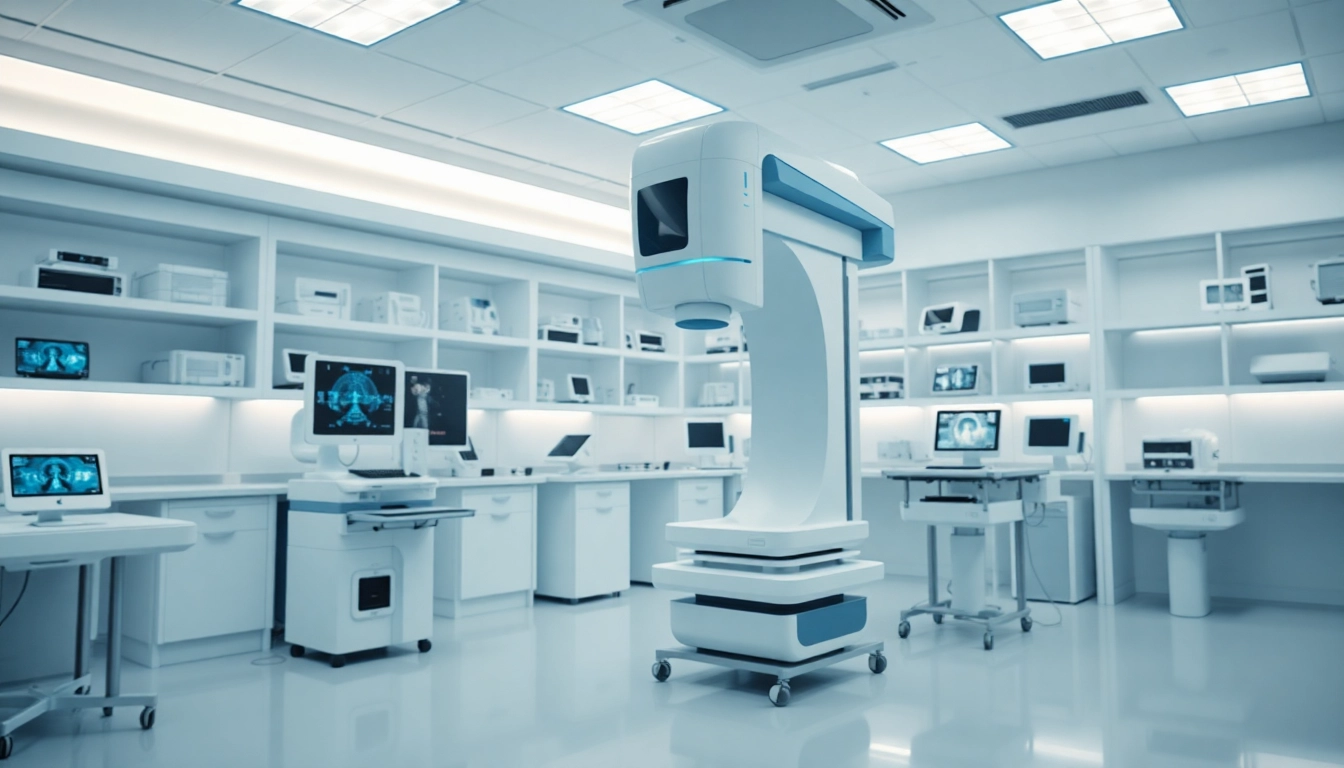Understanding Medical Parker Technology
The advent of advanced imaging solutions has revolutionized the medical field, particularly in the diagnosis and treatment planning processes. Among these solutions, one of the most notable is medical parker. But what exactly does this term encompass?
What is Medical Parker Technology?
Medical Parker technology refers to a suite of advanced medical imaging solutions structured around providing high-quality diagnostic tools and components. It encompasses various elements, including high-voltage x-ray imaging devices, cutting-edge imaging software, and integration capabilities with existing medical equipment. This technology is essential for enhancing the precision of medical diagnoses, improving patient outcomes, and facilitating efficient workflows within healthcare environments.
Applications in Healthcare
Medical Parker technology finds its applications across numerous healthcare settings. Hospitals and clinics utilize these advanced imaging systems for several purposes:
- Diagnostic Imaging: Used in radiology departments for precise imaging to support diagnoses.
- Surgical Planning: Providing detailed views of internal structures to assist surgeons in planning procedures.
- Patient Monitoring: For real-time imaging to monitor patients during various treatments or surgical interventions.
- Research Applications: Employed in clinical research to gather imaging data that informs new treatments and therapies.
Benefits of Using Medical Parker Solutions
The integration of medical parker technology presents several benefits for healthcare providers:
- Enhanced Image Quality: Superior imaging capabilities result in better diagnostics and treatment decisions.
- Increased Workflow Efficiency: Streamlined imaging processes allow healthcare workers to focus more on patient care versus equipment handling.
- Reduced Radiation Exposure: Advanced technology minimizes unnecessary radiation during imaging procedures, prioritizing patient safety.
- Versatile Applications: Suitable for various specialties, including emergency medicine, oncology, and orthopedics.
Key Components of Medical Parker Systems
Delving deeper into the framework of medical parker systems reveals several key components that form the backbone of effective imaging solutions.
X-Ray Imaging Devices
X-ray imaging devices are pivotal elements of medical parker technology. These devices leverage high-voltage systems to generate clear and detailed radiographic images, essential for diagnosing various medical conditions.
Advanced Imaging Software
Complementing the imaging hardware is advanced imaging software that enhances the processing, analysis, and visualization of the images captured. This software is designed to offer intuitive interfaces that allow clinicians to efficiently manipulate imaging data, providing critical insights rapidly.
Integration with Medical Equipment
Medical parker technology is designed with compatibility in mind. It seamlessly integrates with existing medical equipment, allowing healthcare facilities to upgrade their capabilities without the need for complete overhauls. This interoperability is crucial for maintaining an efficient workflow in busy clinical environments.
Best Practices for Implementing Medical Parker Technology
To fully capitalize on the advantages of medical parker technology, healthcare providers must approach its implementation thoughtfully and strategically. Here are some best practices:
Choosing the Right Components
Selecting the appropriate components tailored to the facility’s specific needs is paramount. Considerations should include:
- Type of medical imaging required: Depending on the specialties offered within the healthcare facility.
- Budget constraints: Evaluating both initial costs and long-term return on investment.
- Space and installation requirements: Assessing how equipment will fit within existing infrastructures.
Installation and Setup Guidelines
Following a precise set of installation and setup guidelines ensures that medical parker technology functions optimally. Key steps include:
- Professional Installation: Engaging certified professionals to ensure adherence to all safety standards and performance specifications.
- Thorough Testing: Performing comprehensive testing after installation to confirm seamless operation.
- Staff Training: Adequately training healthcare personnel on using new systems to ensure safety and proficiency.
Maintenance and Support for Longevity
Regular maintenance is crucial for the longevity of medical parker equipment. Institutions should adopt the following strategies:
- Scheduled Maintenance: Setting up routine inspections and maintenance checks to prevent unexpected failures.
- Prompt Repairs: Addressing issues immediately to minimize downtime and maintain operational efficiency.
- Up-to-Date Training: Keeping medical personnel trained on the latest equipment updates for safety and performance.
Case Studies: Success Stories with Medical Parker Technology
Evaluating case studies helps to illustrate the tangible benefits and successes achieved through the implementation of medical parker technology.
Hospital Implementations
Several hospitals that have integrated medical parker technology have reported significant enhancements in imaging accuracy and patient throughput. By upgrading imaging systems, these hospitals have reduced the time taken for diagnoses, leading to faster treatment initiation.
Research Applications
In research settings, medical parker technology has facilitated groundbreaking studies. Advanced imaging capabilities allow researchers to gather data more efficiently, thereby accelerating the pace of scientific discovery and innovation.
Community Health Outcomes
Community health initiatives have utilized medical parker technology to improve access to care. Through mobile imaging units equipped with this technology, healthcare providers can reach underserved populations, ultimately leading to better health outcomes and increased preventative care measures.
The Future of Medical Parker Technology
As healthcare continues to evolve, so too will medical parker technology. The future promises a landscape rich with innovation and enhanced capabilities.
Emerging Trends and Innovations
The medical technology sector is witnessing trends that indicate a shift toward even more integrated and intelligent imaging solutions. Artificial intelligence (AI) and machine learning play significant roles in image analysis, offering enhanced decision support for medical practitioners.
Potential for Industry Disruption
As these technologies develop, they hold the potential to disrupt traditional methods of diagnostics and treatment planning, leading to entirely new paradigms in patient care.
Preparing for a Tech-Driven Healthcare Landscape
To adapt to the forthcoming changes, healthcare organizations must proactively invest in staff training and technology upgrades, ensuring they remain competitive and capable of meeting patient needs efficiently. Emphasizing a culture of continuous learning and adaptation will be critical in navigating the evolving landscape.
